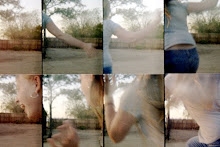Today, I'm 23, but years ago I was just another little kid exploring. On a trip to Morro Bay with my family once, my sister and I stumbled upon this unrecognizable mass that had washed up on the shore. Something white and blubbery, about the size of the tire on a car, shaped like a horseshoe crab, but much too large and not crab-like at all. We poked at it with sticks, turned it over, did dances around it, and drew pictures in the sand depicting its life as whatever creature we decided it was, but we never knew exactly what it was. And at the end of the day we all got back in the truck and went home to forget about it.
Likely, it was some bit of a whale or other sea creature, but it could have been a "globster," a term coined for an unidentified organic mass that washes up on the shoreline of the ocean or any other body of water. The nature of globsters remains a mystery even as the tissues from them are often tested and identified by scientists. Many of these monsters that have been found have been identified, but often globsters lack apparent bone structures, tentacles, flippers, or eyes, making it difficult to determine the species if it is a known one. Some globsters that have been thought to be plesiosaurs were in reality the rotting carcasses of basking sharks. Globsters of all shapes and sizes have been sighted, examined, photographed, and reported since the St. Augustine Monster of 1896, which ended up being a mass of blubber from a sperm whale. The "Montauk Monster," one such globster that never was identified, washed up on a beach near Montauk, New York in July of 2008. By its dental patterns and front paws, it was speculated to be a raccoon, yet it had what appeared to be a beak and the legs seemed too long in proportion to its body.
These monsters and globsters can also become known as "cryptids," creatures whose existence has been suggested but unrecognized by the scientific community, or regarded as highly unlikely. The most famous of these cryptids are of course, Bigfoot, the Loch Ness Monster, and the Chupacabra. But hey, there's a whole field of study dedicated to the study of these alleged animals, although no scientist has ever been employed to study it--cryptozoology. People are either afraid of, intrigued by, or skeptical of the unknown, and we always will be.

